Nepenthes rajah × villosa from seed
Published June 12, 2024
Last updated October 26, 2024
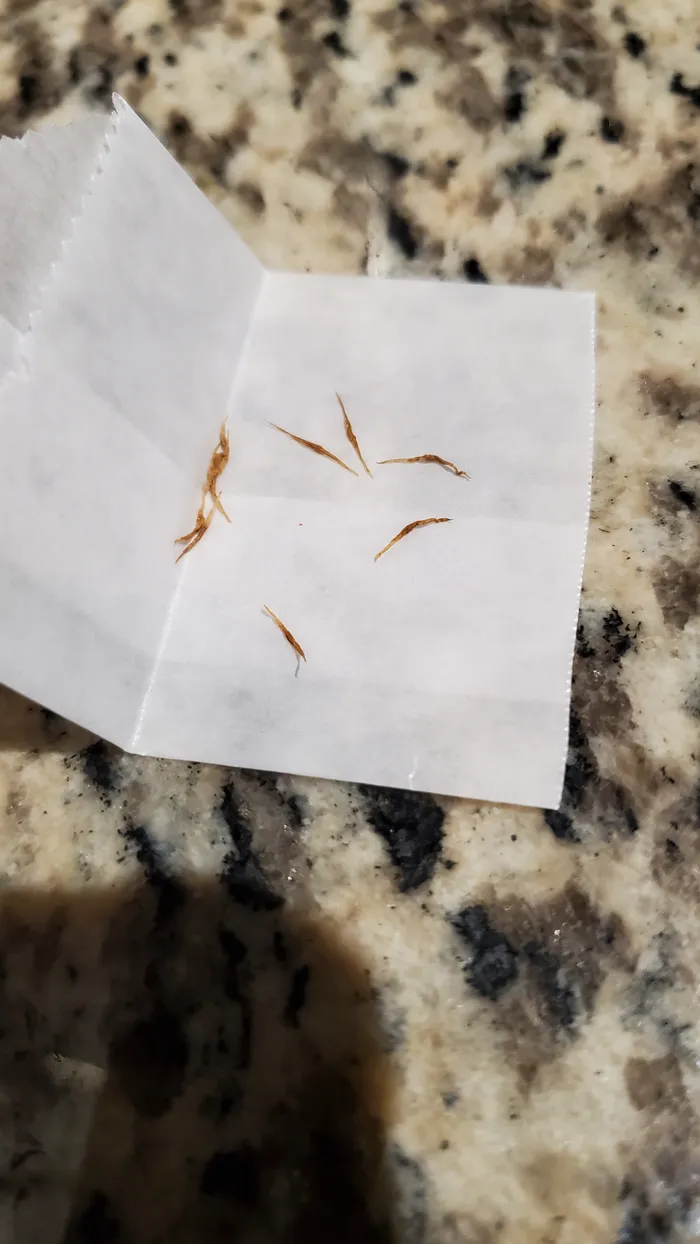
October 26, 2024: Progress looks good. I tried a tiny amount of Fertilome root stimulator + fertilizer and shortly thereafter I noticed that some pitchers seemed to yellow and the lid of one of the larger pitchers collapsed. So won’t be repeating that experiment! Otherwise they are still growing ok and I’m so happy that the tiniest one is finally growing actively after a year of just sitting there doing nothing. The largest one is definitely ready for a repot, however it is so close to the smaller seedlings that I’m hesitant to pull it out of there. I’m afraid I might tear up their roots and set them back to a point from which they won’t be able to recover. For now, I’ll plan on doing a repot in the spring.
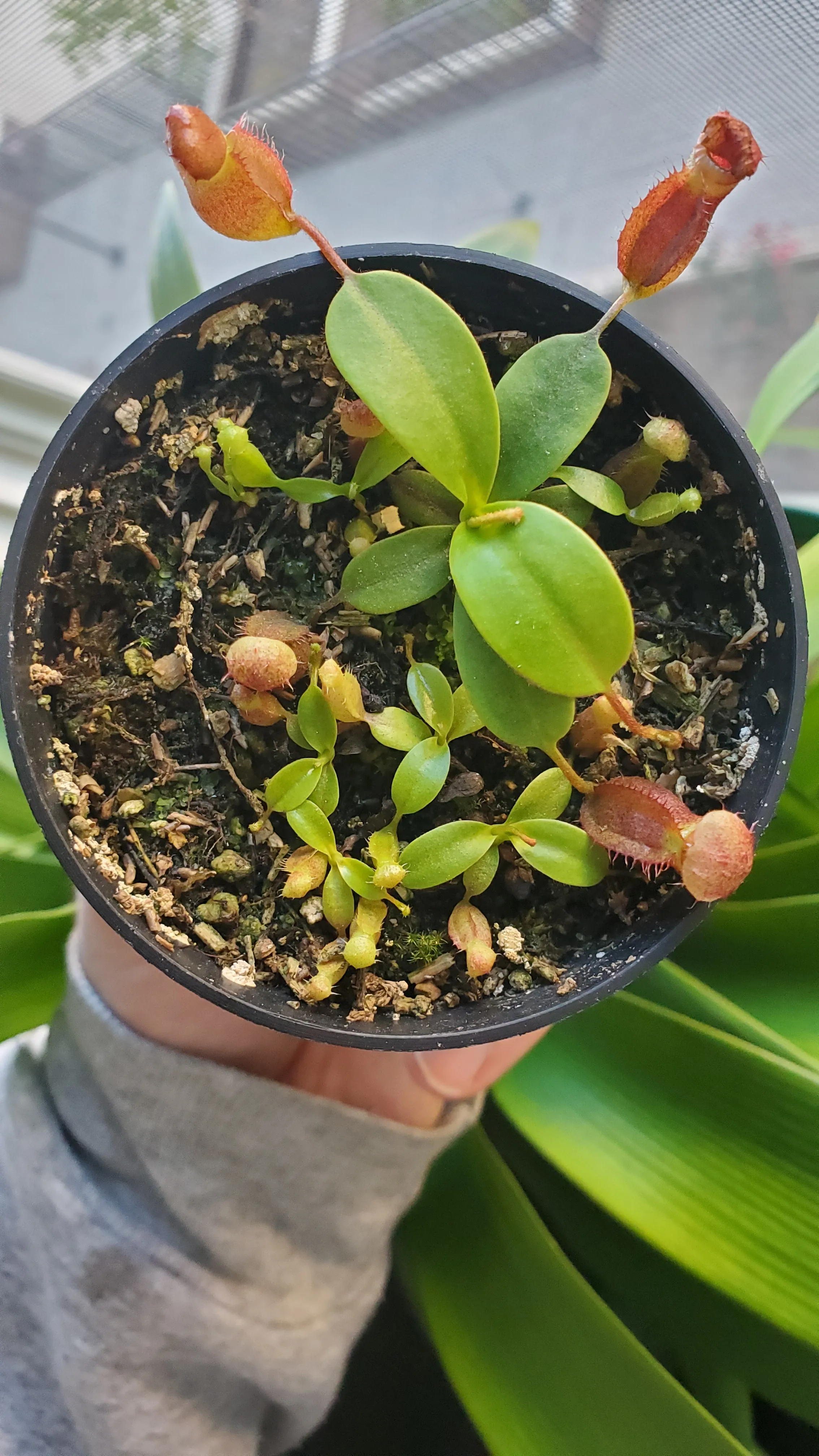
September 22, 2024: The tiny seedling that didn’t look like it was going to survive has sprouted leaves. It looks like it is going to grow normally after a year of doing almost nothing! The largest seedling continues to get larger with every pitcher, and the remaining plants are picking up size slowly as well. I consulted with the breeder, and he said the largest one is ready to be potted up individually. Its leaves are quickly crowding out its siblings, but I may wait some months before attempting to move it. Pulling it out could mess up the roots of the other seedlings.
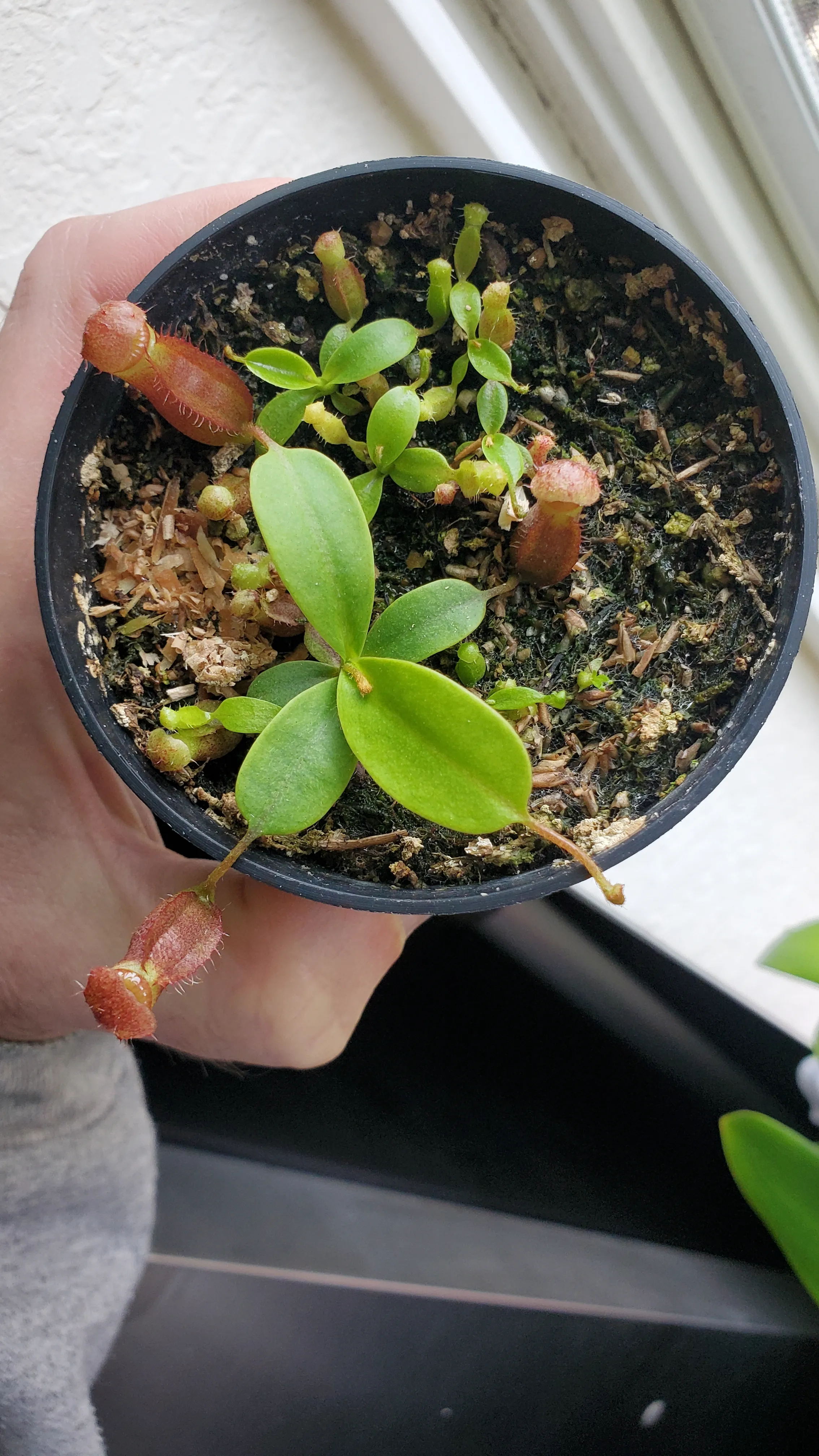
July 16, 2024: The largest seedling continues to dominate the community pot, but a couple of the others are starting to get some decent size on them as well. The pot is drenched with distilled water whenever it starts to feel light. I try to let it dry out somewhat between waterings.
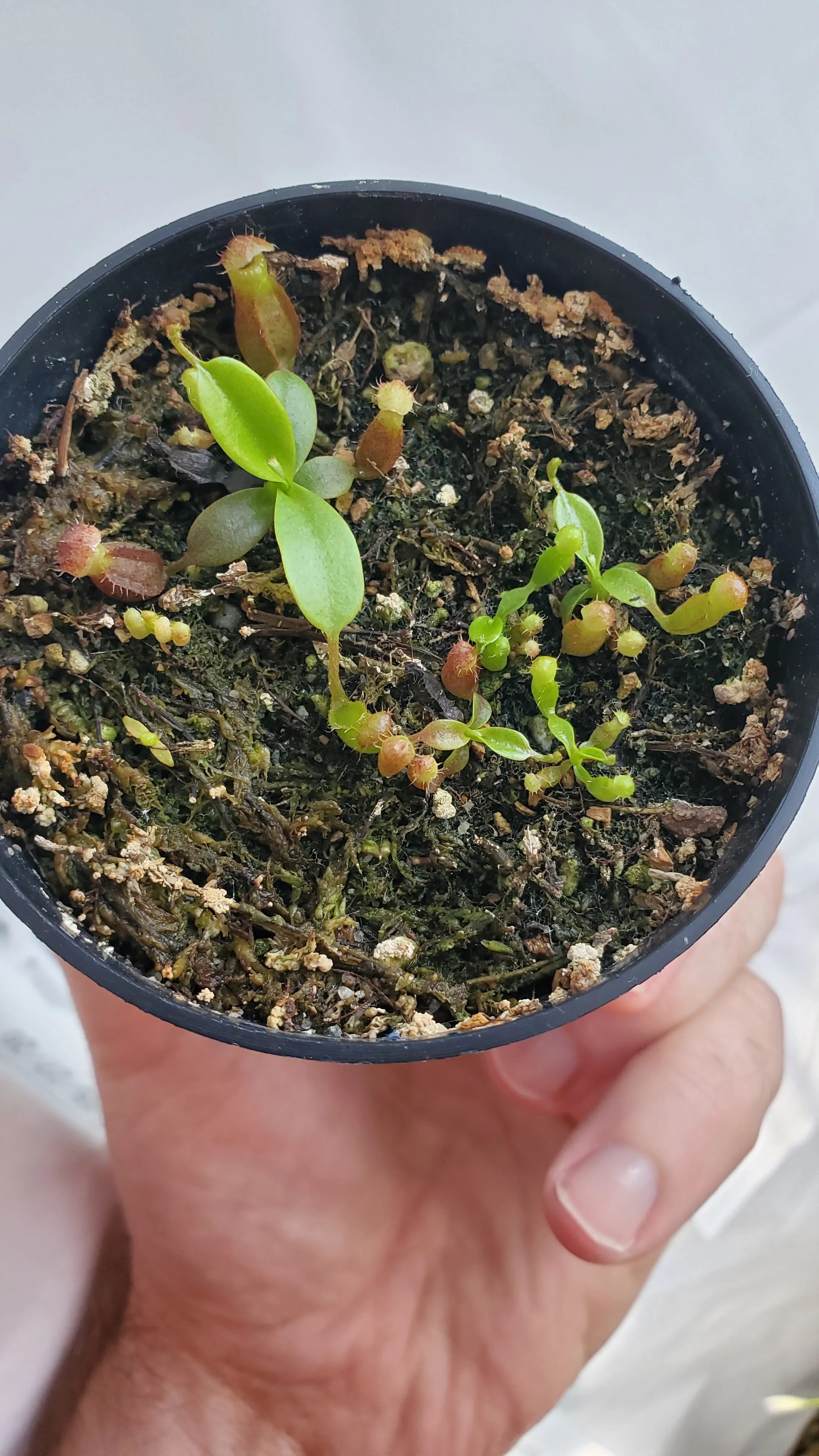
June 12, 2024: Continuing to grow well. The osmocote pellets have caused algae to grow around the plants, but I don’t see any ill effects to the seedlings themselves. Some really nice red color coming in. Some of the tiniest seedlings don’t seem to be gathering all that much momentum as they grow, but time will tell. The monster of the group just keeps getting bigger.
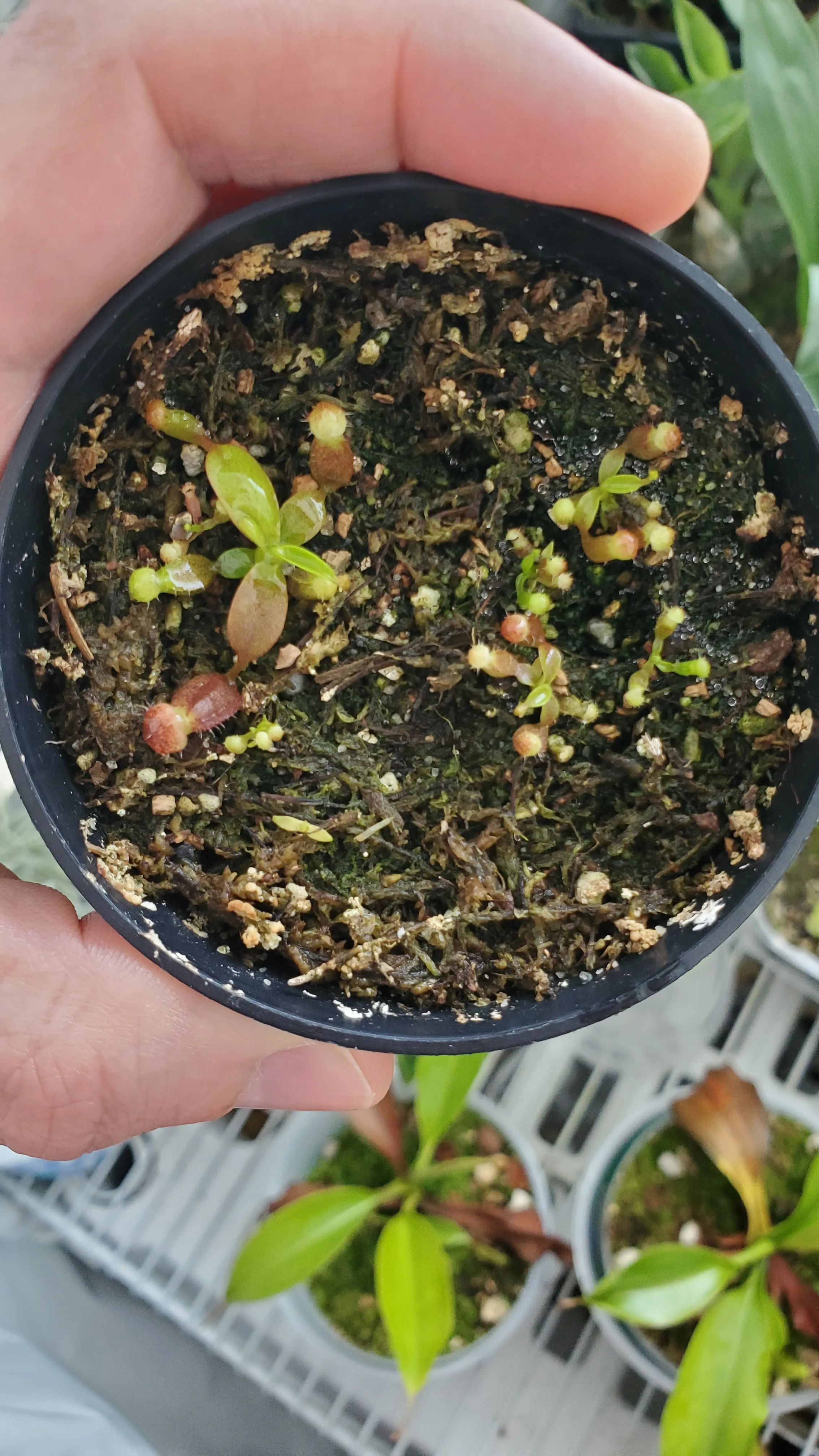
May 9, 2024: Look how big they’re getting. One plant is just leaps and bounds beyond the rest. Nice red coloration is showing on all plants. Experimenting with fertilizer by putting 2 osmocote granules in the medium near the seedlings.
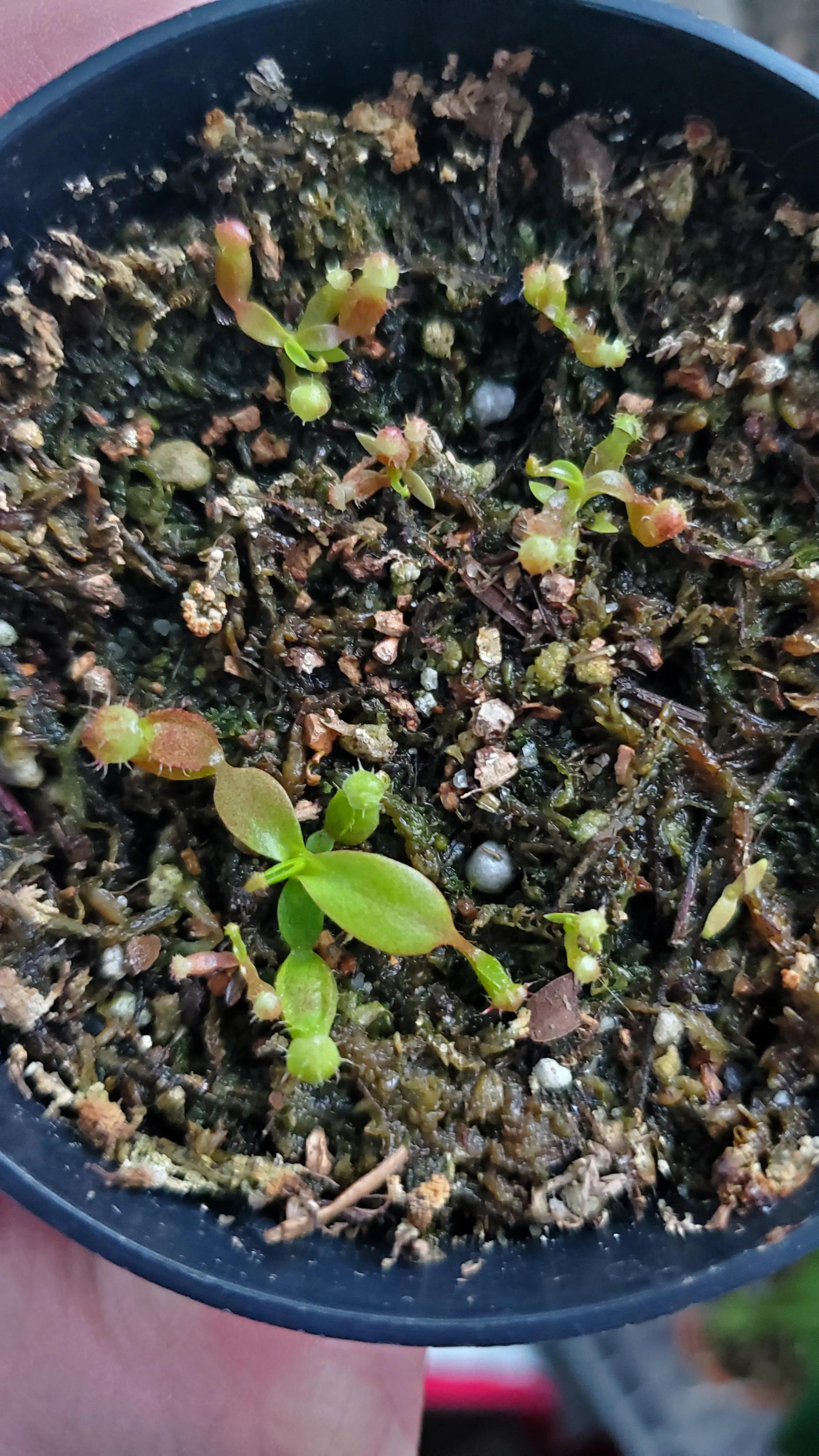
February 25, 2024: The largest seedling is now working on its third pitcher. Meanwhile, as spring approaches, temperatures in the tent are rising, so I will keep my eyes on the condition of these little plants. They supposedly require cool nights, but the exact temperature range will have to be determined by watching them closely as they grow. My hope is that as they are hybrid, they will display more resilience to warmer temperatures than their heat-sensitive parent species.
February 11, 2024: So far 8 seedlings have germinated. Most have produced at least one pitcher and are working on their second. One, however, has failed to get past its seed leaves. The tiny seedling seems yellower than the others and I do not expect it to survive.
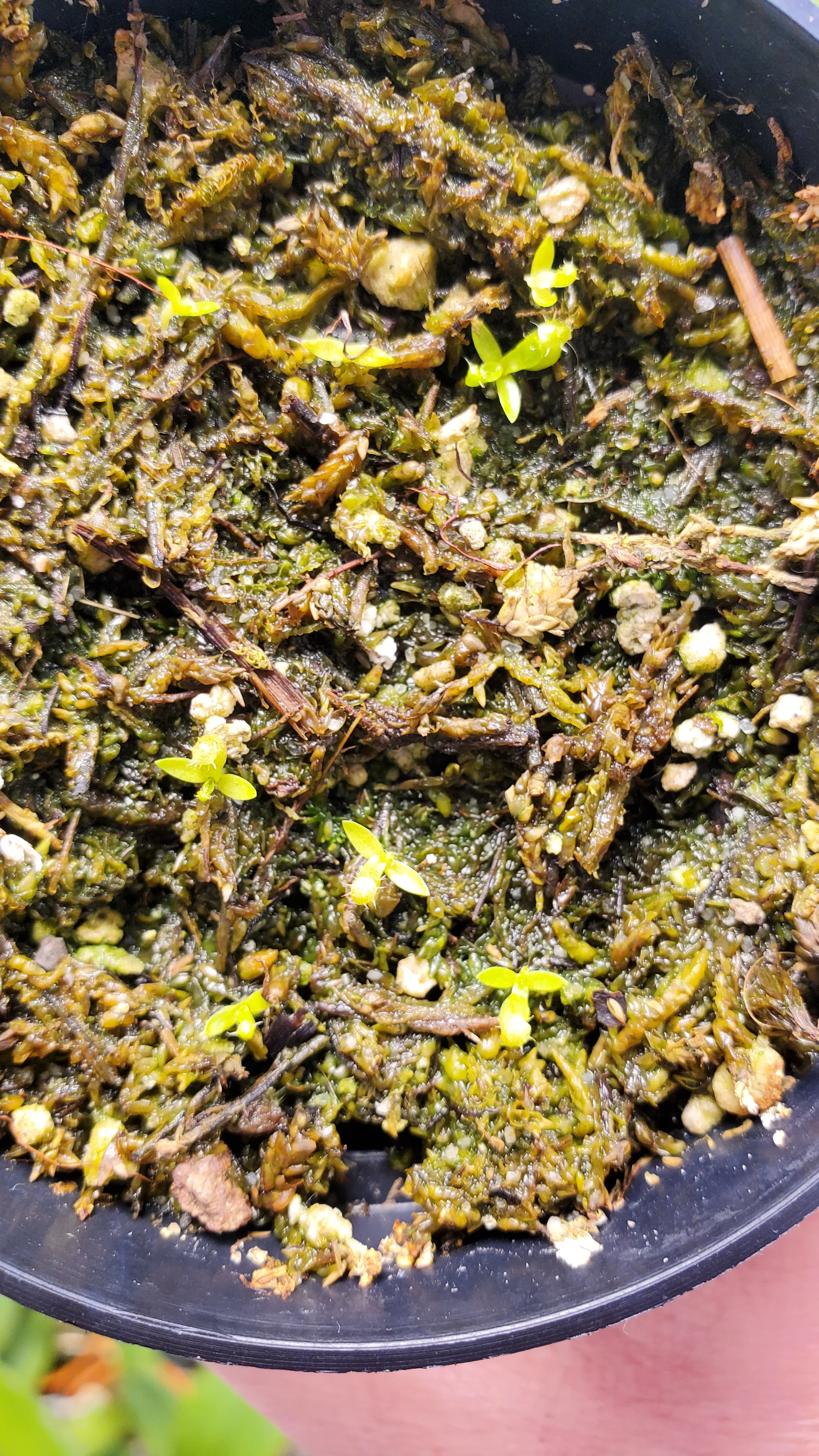
January 28, 2024: Four seedlings have cute little pitchers, and new growth is visible out of their crowns! Four other seedlings are working on their first true leaves. One seedling is yellower than the rest. I have sprinkled them occasionally with the water I use on the orchids, which contains a small amount of K-Lite fertilizer.

December 14, 2023: First true leaves pushing out! 6 seedlings up, 2 more still pushing themselves out of the seed. Two other seeds have had a small piece of moss over them to keep them wet. Hopefully they will germinate too.
December 5, 2023: Left germinating seeds for 11 days while out for thanksgiving. Came back to 4 sets of seed leaves, and 4 more seeds putting out green stems! Total of 8 germinated so far! Letting them sit in water until media is wet, then removing water and waiting until medium is just damp, with tips of moss beginning to dry.

November 13, 2023: First signs of germination! Tiny green stem extending from seed to soil. Joy!
October 7, 2023: Mikhail Kujawa relieved my worries and said the seeds will be fine. He even said the white mold is no big deal, that strong seedlings will grow through it. He did advise against covering the seeds, so I have about 6 uncovered seeds and 5 lost somewhere under the medium. He said Jeff’s seed is great, and I should expect to see something around 21 days. I am still worried that the Physan 20 solution was of too strong a concentration and may have damaged them, but that is my only concern now. Hopefully by the end of October we will see some life in these seeds.
October 6, 2023: Poked around with toothpick to try to find seeds that were buried. Only located 6 of the 11. Removed large chunks of perlite. Sprayed with unknown concentration of Physan 20, I think 2-3 teaspoons per gallon (for disinfection). Physan 20 booklet says soak/spray seeds/seedlings in 1.5 tsp/gal solution, I think I used 2 tsp. Sprayed later in the day with pure distilled. Not sure I haven’t killed them, luckily several are still buried.
October 5, 2023: Found more white hairy mold on sticks in medium. Pulled out and sprayed with dilute physan solution (2 tsp/gal diluted even more in distilled).
October 3, 2023: Found white hairs indicative of fungus on one seed that was not covered by media. Removed pot from plastic container to increase airflow, and sprayed again with Immunox solution. Not sure if I shook the fungicide well before mixing, maybe it’s just old and no longer potent, or maybe I didn’t spray thoroughly enough the first time. Changed fungicide out for Physan 20 solution in spray bottle.
October 1, 2023: Received 11 seeds in a packet from Jeff (@nepenthesgod) of N. (rajah × villosa), bred from his own plants. Mixed together California Carnivores Pinguicula mix with some long fiber sphagnum from Home Depot. Heated to 200°F for less than 2 hours in oven, dry. Added distilled water and let cool, working water into substrate. Tore pieces of sphagnum into smaller bits and chunks while dry. Added to 3” pot. Spread seeds out evenly on top. Sprinkled small amount of media on top of seeds. Let pot sit and soak in 2” distilled water for a few minutes. Sprayed top of media and inside of fast food container with 1 oz/gal Immunox fungicide solution. Grower said 4 weeks average to germinate.
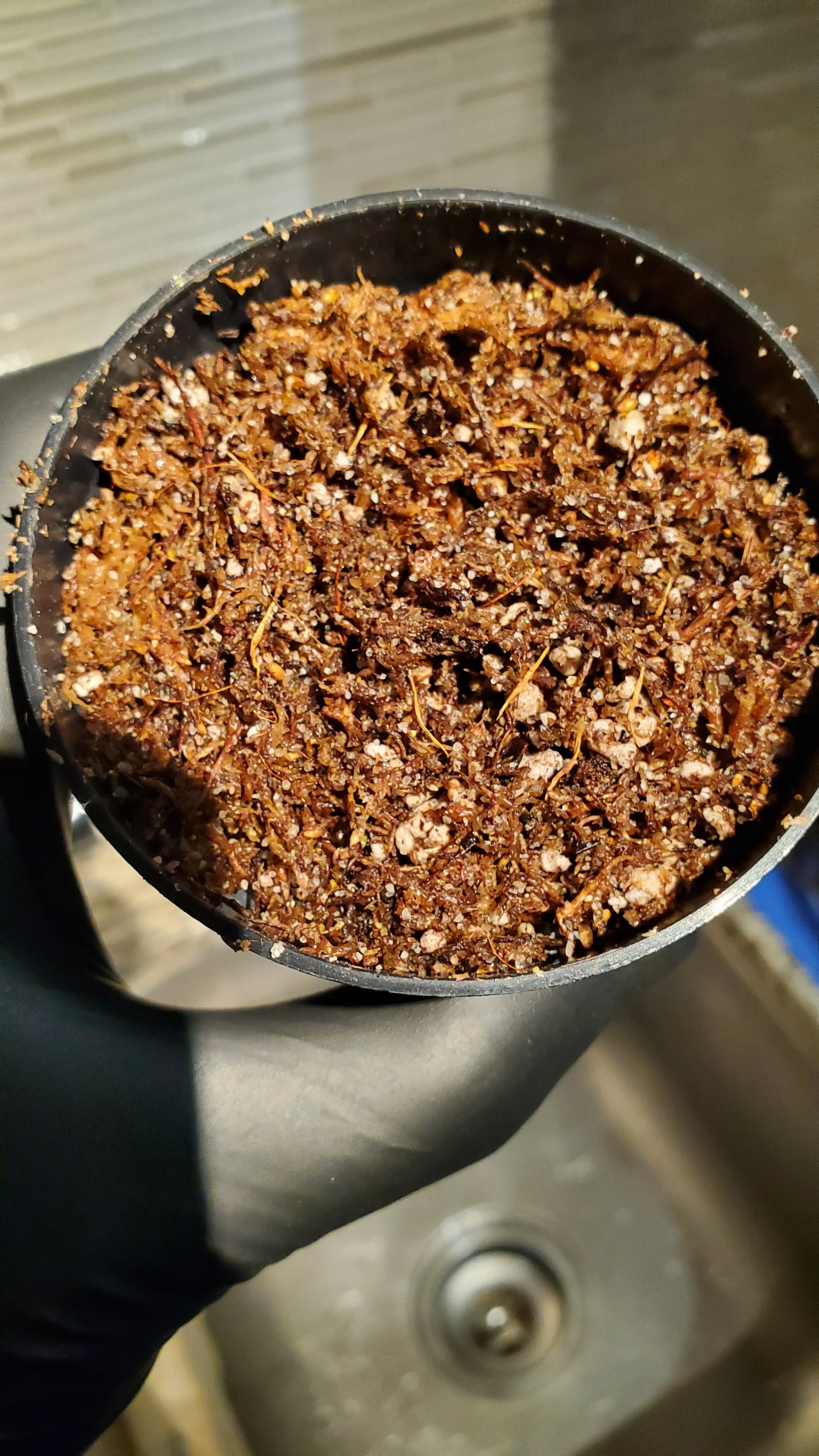
 Home
Home